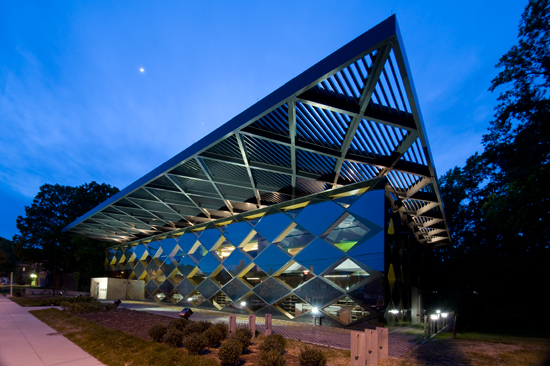Lightweighting With Aluminum: The Growing Trend for Architects Everywhere
Learning Objectives:
- Discuss the sustainability of using lightweight aluminum in large structures and canopies. These benefits include the reduction of labor, shipping and installation costs
- List the advantages of using aluminum extrusions to optimize material use while increasing the strength and capacity for challenging structures.
- Review the life-cycle benefits of aluminum as a material, its durability, recyclability and corrosion resistance.
- Develop tools to design for disassembly and resiliency using aluminum members in long span structures that are bolted together.
Credits:
Defining a space with long span systems requires the knowledge of how to use advanced materials and engineering practices. Choosing structural aluminum to convey lightweight, floating design visions is becoming a growing trend. Architects and engineers are part of a growing movement that is choosing aluminum instead of steel as a structural material because it is lightweight while maximizing material strength. They are using aluminum in LEED® Gold, Silver and Platinum buildings as a durable, corrosion-resistant material with high life-cycle values. Aluminum structural systems contribute to the latest movement to design for resiliency and recyclability. Design professionals are designing and engineering systems constructed with extruded metal components bolted together. A building can be disassembled and recycled by using a bolted aluminum system. Aluminum is one structural material that can be forever upcycled into new entities without compromising strength or the integrity of the material.
The Benefits of Extrudable Lightweight Aluminum
One of the primary advantages of aluminum alloys is this high strength-to-weight ratio. Aluminum as a material is combined with other elements to create an alloy that is stronger than steel but with only half the weight of the same strength of steel. Extruded aluminum building components are lightweight, have great strength and can be assembled into numerous shapes to create simple or complex geometries.
Unlike steel, aluminum can be manufactured into numerous types of structural extrusions that are extremely thin yet also extremely strong. When steel is hot rolled into numerous structural shapes, the structural members are 2/3rds heavier than similar aluminum products. Lightweight aluminum components can weigh anywhere from 35% to as much as 80% less than steel, yet provide equal strength to the heavier steel components.

Photo by Brett Drury, Courtesy of CST Covers
The 168,686-pound floating canopy constructed with 448 tube framing members and louvers would weigh three times as much and provide a much thicker profile if not constructed with aluminum framing members. The aluminum canopy engineered for the Francis Gregory Library supported the vision of the architect in this LEED® Gold building in Washington D.C.










